Hope for the Mindo Toad: the finding of Soli-Tyrone
Published September 25, 2024.
In September 2024, a team of biologists and park rangers from the Khamai Foundation, supported by the Ceiba Foundation, began a series of monitoring expeditions in the cloud forests of Ecuador. Their goal? To determine whether any individuals of the Mindo Harlequin Toad (Atelopus mindoensis) still survive.
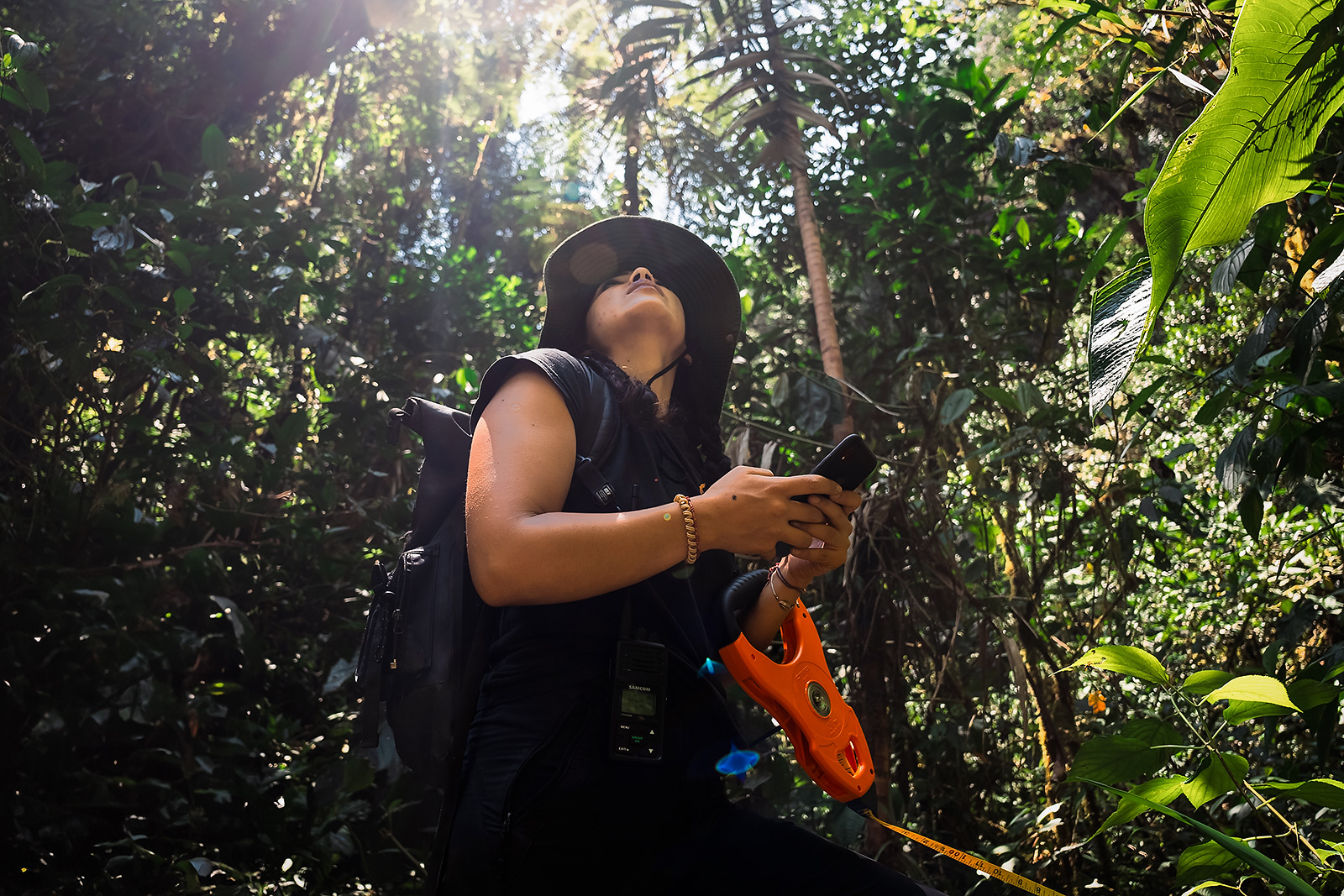
Biologist Amanda Quezada explores the streams of Arlequín Reserve in search for the Mindo Harlequin Toad. Photo by David Jácome.
Once the most common amphibian along the rivers of Mindo, this toad was declared “possibly extinct” after it hadn’t been seen in its natural habitat since 1989.
Famed amphibian taxonomist John Lynch noted that in July 1977, reproductive pairs and tadpoles of Atelopus mindoensis were abundant near Mindo. However, during the 1980s, an amphibian pandemic struck.
Chytridiomycosis, a deadly infectious disease, caused mortality rates as high as 99–100 percent in certain toad species, including the Mindo Harlequin Toad. The species disappeared and was presumed extinct for over three decades.

The amphibian fungal panzootic chytridiomycosis, caused by Batrachochytrium dendrobatidis, is believed to be the main culprit behind the mass amphibian die-offs world-wide. Photo by Joel Sartore.
Then, everything changed in 2019, when a small relictual population of just five individuals was discovered in a remote, undisclosed location. This pristine cloud forest stream is now believed to be home to fewer than 50 mature toads, the only known surviving population.
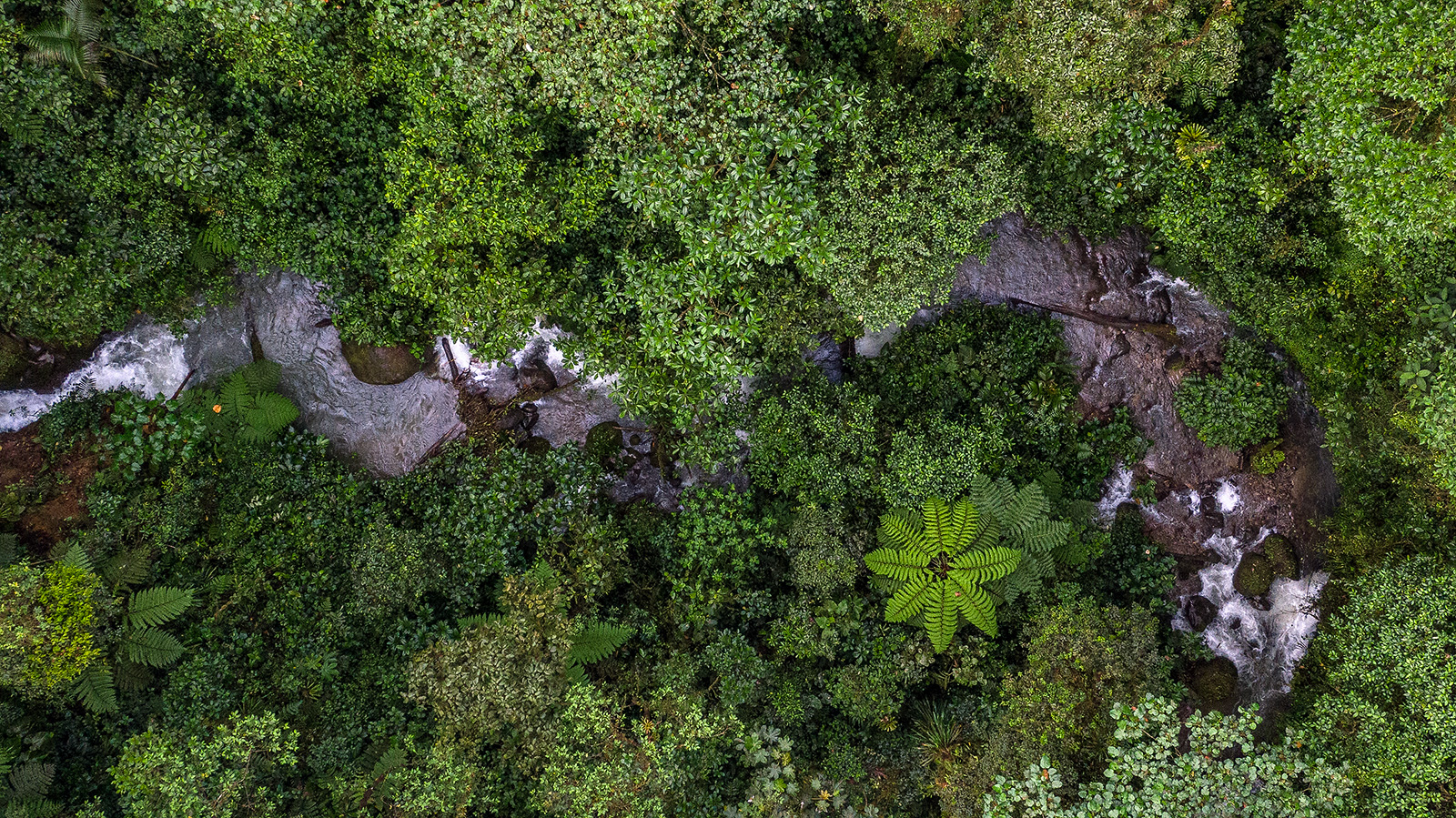
This river is the only known place where the Mindo Harlequin Toad was not extirpated by the chytridiomycosis epidemic. Photo by Alejandro Arteaga.
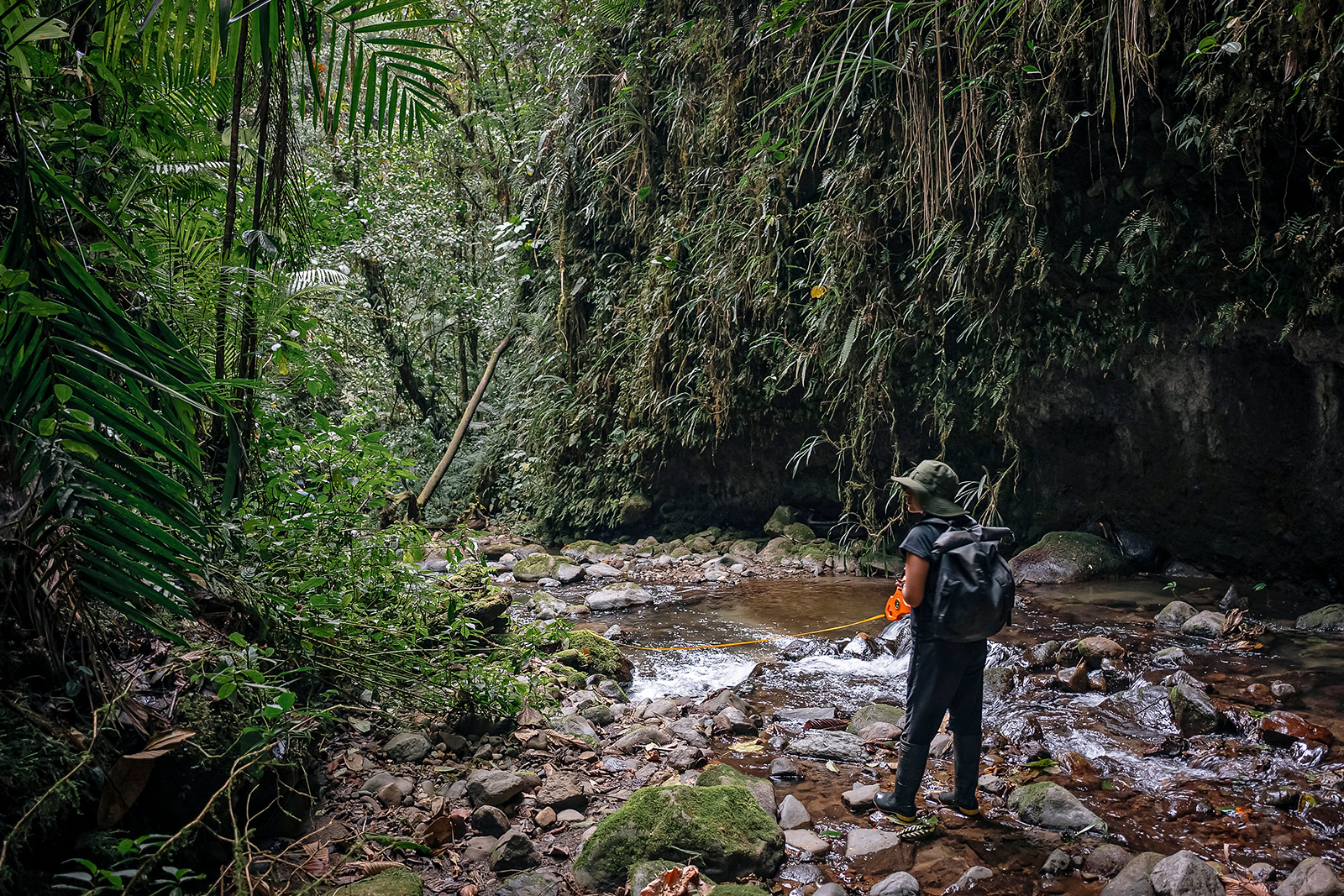
Biologist Amanda Quezada explores the rivers of Arlequín Reserve in search for the Mindo Harlequin Toad. Photo by David Jácome.
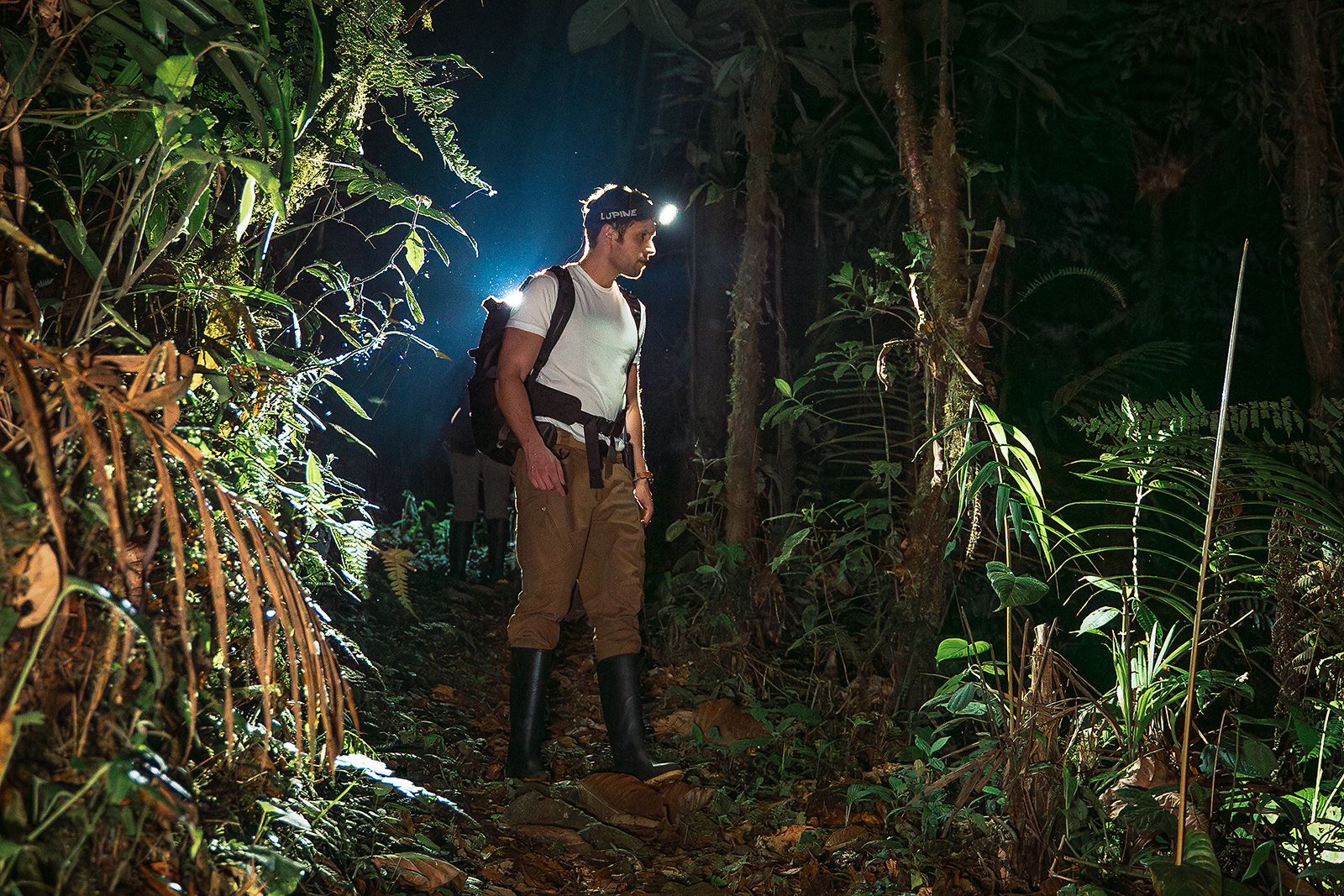
Biologist Alejandro Arteaga surveys the habitat of Atelopus mindoensis. For five years, no additional toads were found. Photo by David Jácome.
Unfortunately, all attempts to breed Atelopus mindoensis in captivity failed, and the founder individuals perished. Since then, no additional toads have been found. For five years, there were no signs of the species.
The team scoured streams, ponds, large rivers, and nearby vegetation, even searching rocks in the water for tadpoles. Although they found other frogs and tadpoles, none belonged to Atelopus mindoensis. No luck.
That is, until September 10, 2024, at 7:30 pm, when Gerardo Obando, park ranger with the Khamai Foundation, spotted a silhouette perched on a leaf 2.3 meters above the ground. He knew it was a toad, but doubted it was “the toad”—he had been told the species was entirely green, and this one wasn’t.
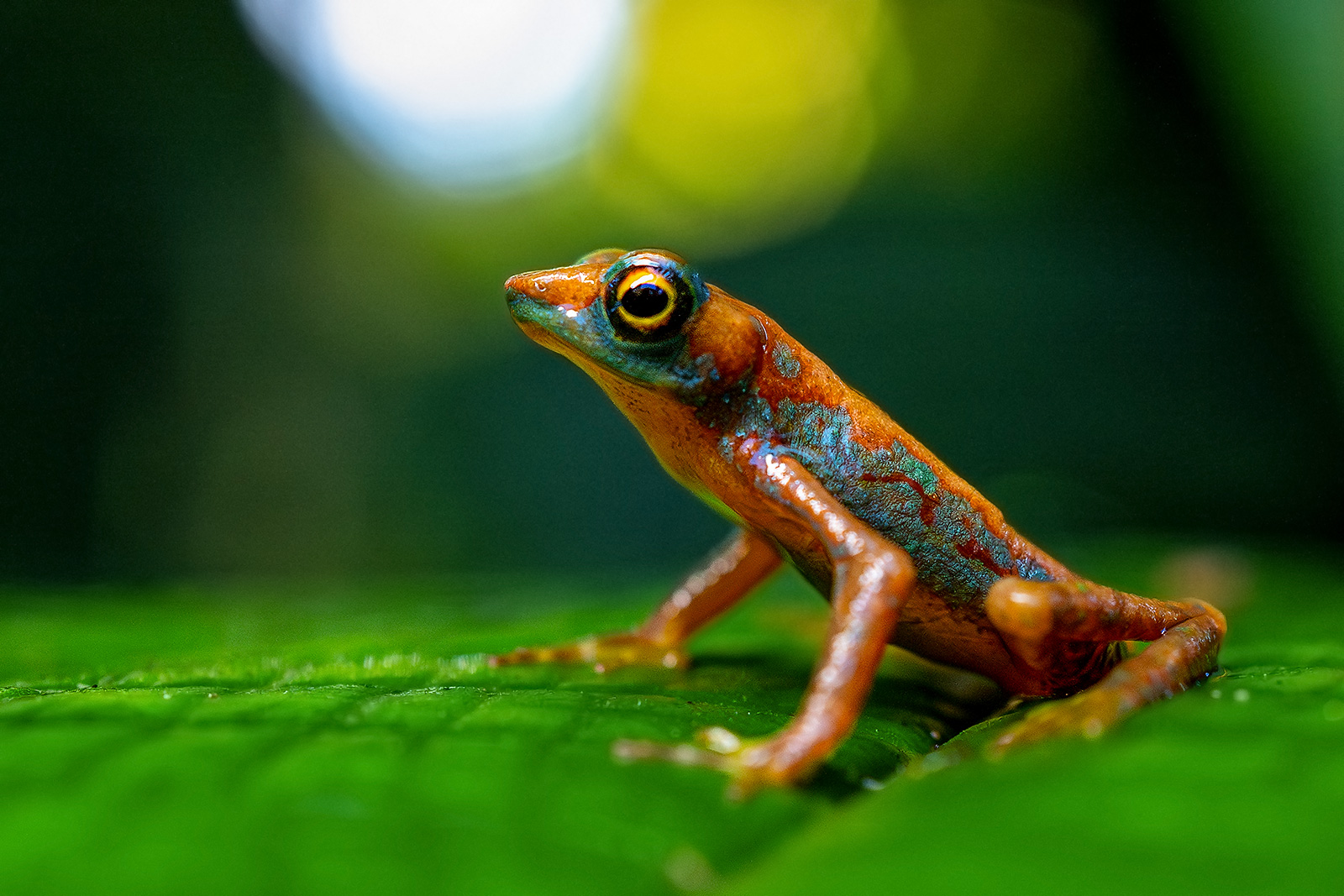
“Tyrone the Solitary” or “Soli-Tyrone González Obando” is the first living individual of this species found in five years, and could also be the last one. Photo by David Jácome.
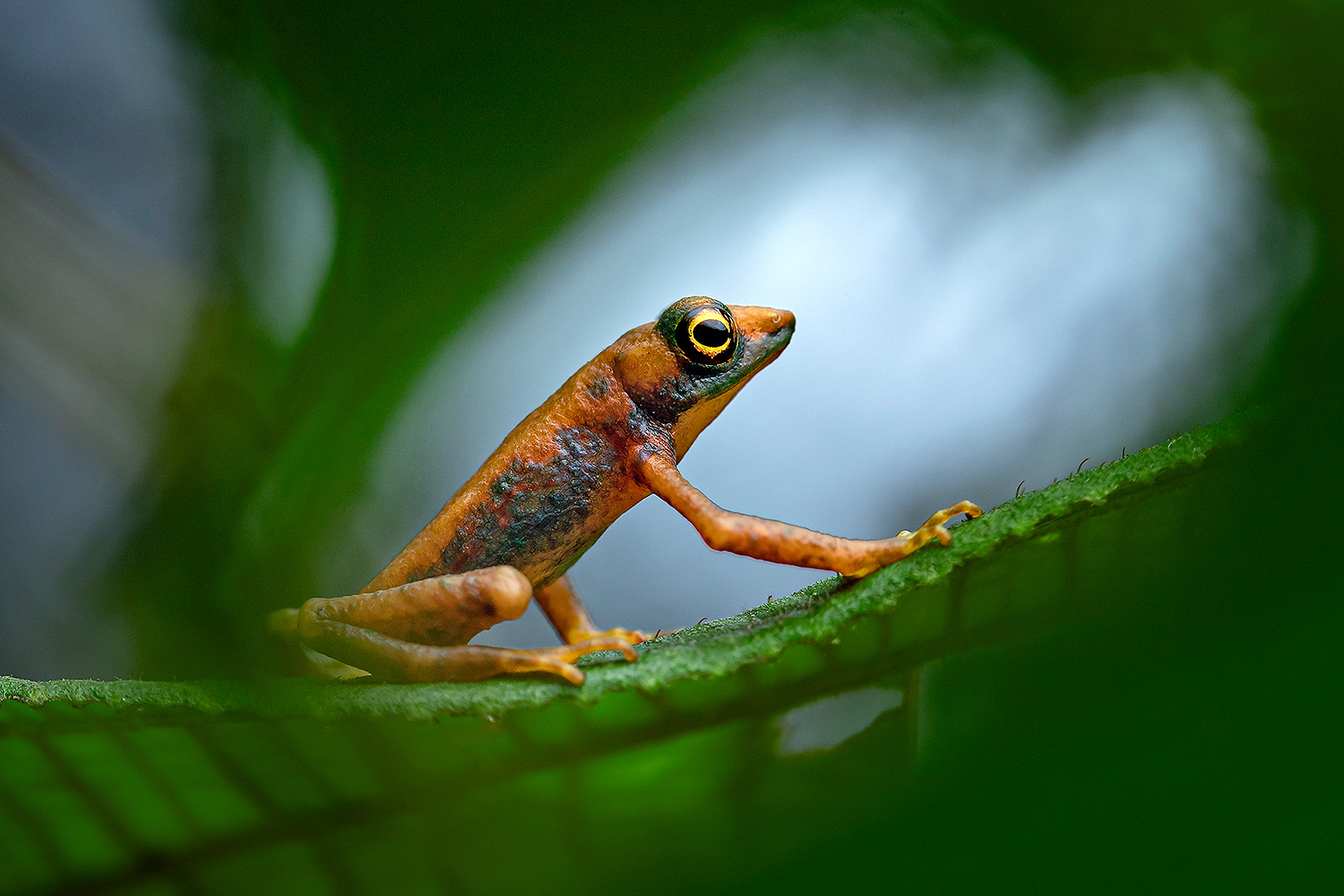
“Soli-Tyrone” was found perched on a leaf during the fifth day of the monitoring expedition. Photo by Amanda Quezada.
He called Amanda, the field biologist leading the monitoring expedition, and together they carefully lowered the leaf for a closer look. “It’s an Atelopus!” Amanda exclaimed.
This marked the first individual of the species seen in five years and only the sixth recorded in 30 years. No other toads were found during the initial monitoring phase, so the lone toad was left where it was found, enclosed in a makeshift semi-permeable quadrant to track its condition.
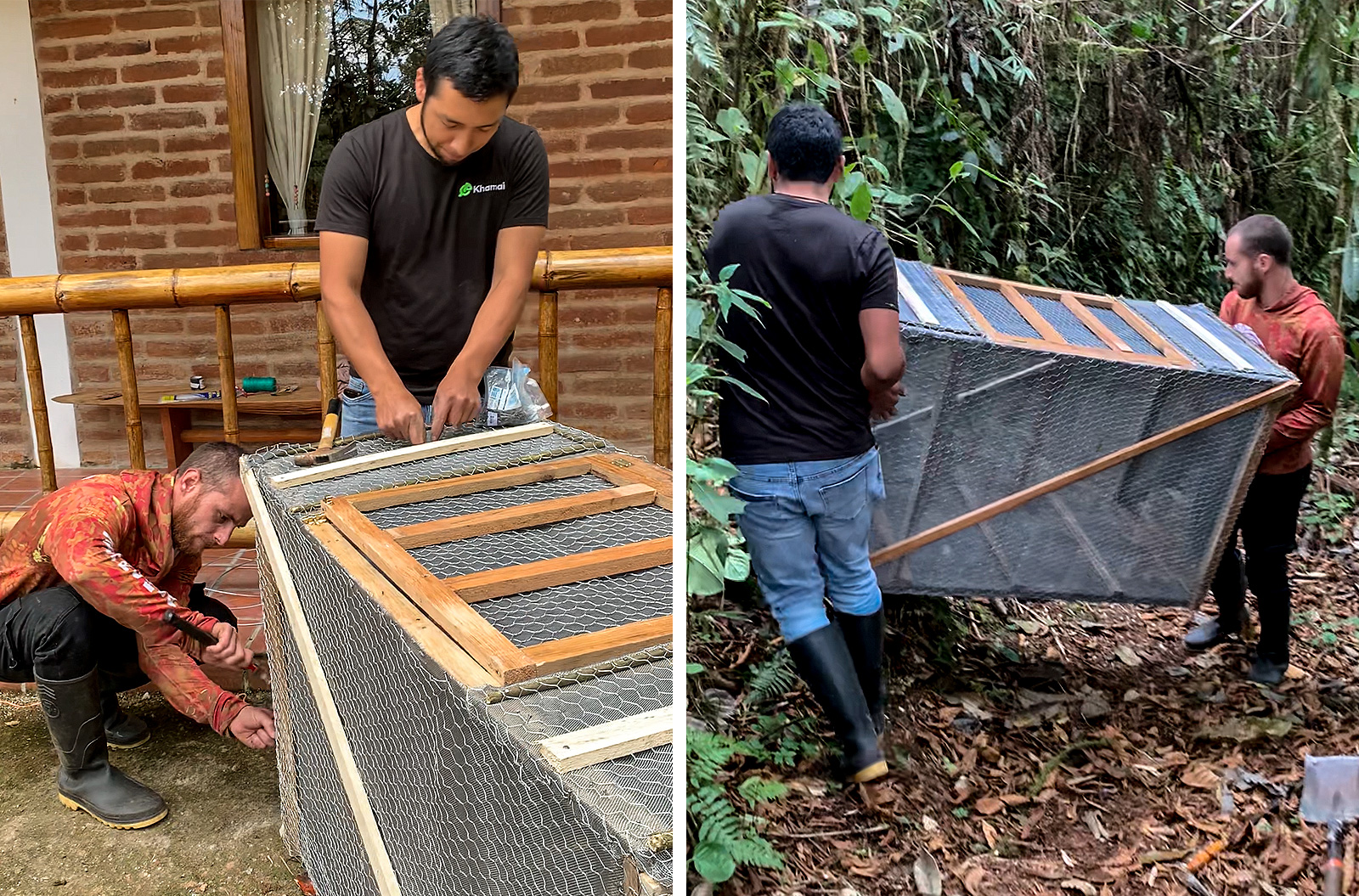
Biologist Jose Vieira and park ranger Gerardo Obando of Khamai Foundation designed and built an in-situ terrarium to monitor the toad. Photo by Amanda Quezada.

In-situ terraria implemented as part of the Rapid-response Project to save the Mindo Harlequin-Toad. Photo by Amanda Quezada.
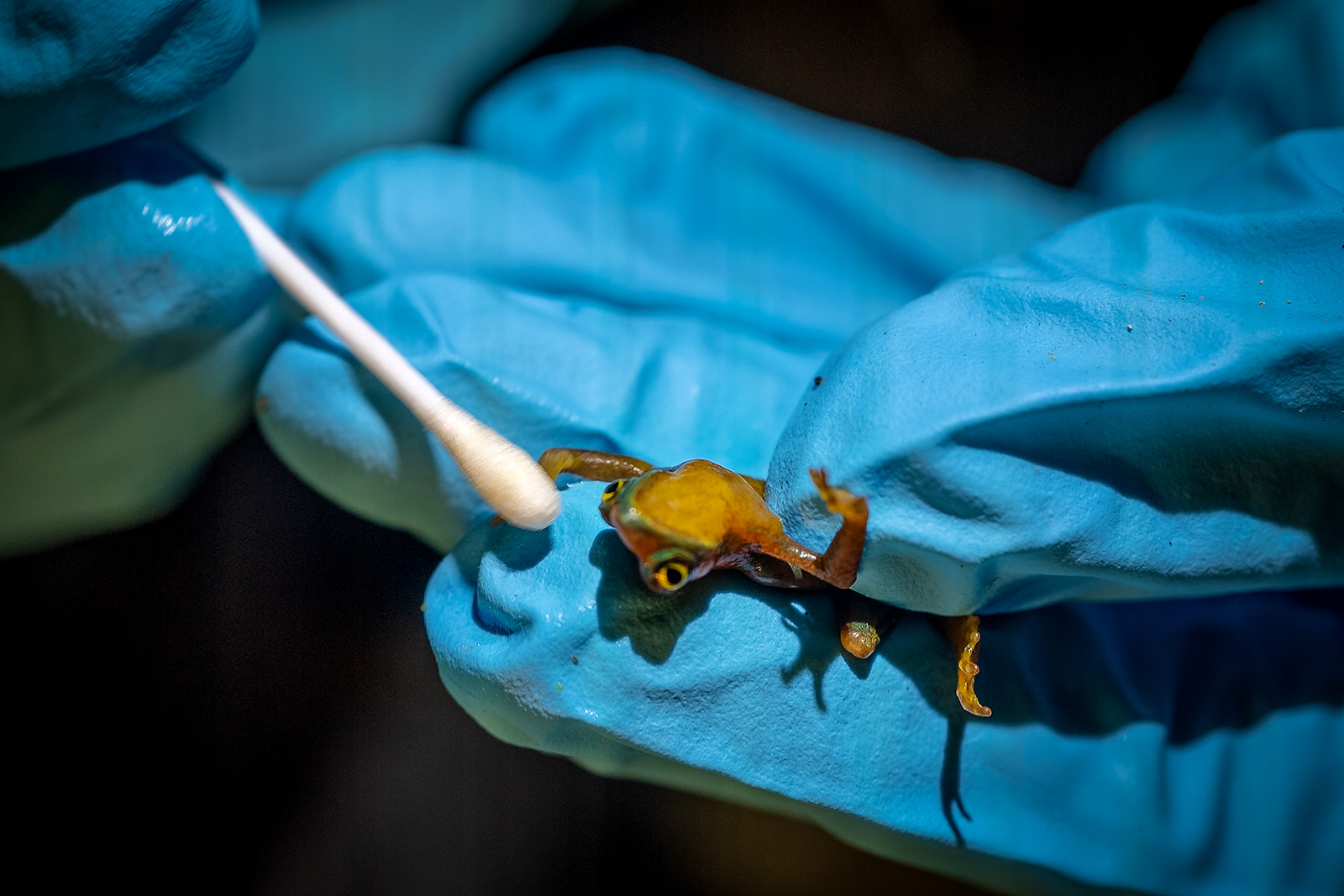
Tyrone the toad was swabbed to confirm whether he is infected with chytrid fungus. The population has so far tested negative for the disease. Photo by David Jácome.
The toad was named “Tyrone the Solitary,” or “Soli-Tyrone González Obando,” and is now under the close watch of Gerardo and Amanda, with support from the Ceiba Foundation.
The discovery of Soli-Tyrone is thrilling news—it proves the species is not extinct. However, monitoring efforts indicate that population densities are alarmingly low, and the immediate protection of its habitat is crucial.
This is why the Khamai Foundation is seeking your help to save Tyrone’s habitat and safeguard the last remaining population of the Mindo Harlequin Toad.
Please visit fundraiser of the Rapid-response Project to save the Mindo Harlequin-Toad to support this vital mission.
